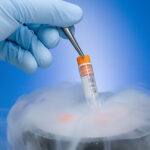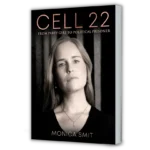Assessing the New Embryonic Stem Cell Extraction Method
Those who would cannibalise the human embryo continue to hype their cause, this time with the possibility of stem cell extraction which leaves the embryo alive. The new procedure, announced this week, resulted in much discussion about the possibility of embryo research free of ethical dilemmas.
An American biotech company, which has developed the new technique, says the new method is a winner because it does not involve the destruction of the embryo. Advance Cell Technology (ACT) of Worcester, Massachusetts said it had let an embryo grow to the 8- to10-cell stage, then extracted cells, and cultivated some of those cells into stem cell lines, without killing the embryo.
An article discussing the breakthrough, published in the science journal Nature on August 23, 2006, instantly resulted in a chorus of voices saying the ethical dilemmas of embryo research had now been overcome. More on this in a moment.
In the normal means of extracting stem cells from embryos, a large number of cells are extracted from an embryo at its blastocyst stage, when it is about five days old and has divided into about 100 cells. This method results in the destruction of the young fetus.
The new procedure involves removing a cell at an earlier stage (around day three). ACT project leader Robert Lanza explained, “What we’re actually doing is removing a single cell from an eight-cell stage embryo, and then we actually culture that cell in the petri dish, and are actually able, though various manipulations, to create stable embryonic stem cell lines.”
He said the procedure is still too new to use immediately, but is worth studying. His company is offering stem cell lines it has developed free to scientists. In Australia, scientists are more sceptical. Alan Trounson of Monash University and the Australian Stem Cell Centre in Melbourne said the new technique was more complicated and less efficient than existing procedures.
Other scientists were hesitant about the new method as well. But the ethical discussion is as important. Those who are pro-life and opposed to embryonic stem cell research offered guarded optimism. Health Minister Tony Abbott, a cloning opponent, said the technique offered the prospect of “ethical research” into stem cells.
And Tasmanian Liberal senator Guy Barnett said the US research could obviate the need for further deregulation in Australia and that cloning proponents should now prove there was a need for further debate.
His new procedure, however, is problematic for several reasons. Thus pro-lifers need to proceed with caution here. There still remain scientific, medical and ethical concerns.
For example, no long term studies are yet available on the safety, or otherwise, of the method. It is just too early to tell if this will be a really safe and effective method.
Also, according to the report in Nature, 16 embryos were destroyed in the process. This reminds us of the Dolly the sheep experiment, in which the scientists at Scotland had to go through 276 failed attempts before Dolly finally came on to the scene.
Plus twinning occurs 10-12 days later, so the removed stem cell may well harm the twinning process. Twinning takes place before the fourteenth day following fertilization. A removed stem cell may well prevent twinning from taking place.
And the long-term effects of removing a cell or cells from an early embryo are still unknown. The removal of a cell from the embryo may result in defects and abnormalities to the child. Indeed, in the procedure at least 10 per cent of the embryo’s body mass is removed. What parent would want their offspring brought into the world only nine tenths complete?
And we already have similar processes at work. In pre-implantation genetic diagnosis (PGD) we can test for possible diseases or defects by removing one or two cells from an embryo conceived by IVF before it is implanted in the woman. The cells are subject to molecular analysis, done by removing and studying the genetic material. However, when the cells are removed the embryo is put at risk by the biopsy process. It has been suggested by some that PGD normally halves the chances of an embryo surviving transfer.
Moreover, life-threatening research should always be done by consent of the patient or the parent. The use of embryos violates the various codes of human rights which preclude non-voluntary experimentation. For example, the Nuremberg Code state that “voluntary consent is absolutely essential” in medical research, and it prohibits experimentation that causes injury, disability or a person’s death.
The embryo is simply being used here as a source for harvestable raw materials. This is the commodification of life at its most barren level.
Indeed, another article in Nature written several years ago admitted, “Your world was shaped in the first 24 hours after conception”. It stated that the human body plan “starts being laid down immediately” upon fertilization. Therefore, the human embryo (regardless of what means by which it is created) should not be treated as a means to an end. It is a young member of the human race, and is therefore entitled to life, liberty and respect.
All this is Brave New World stuff – smoke and mirrors by the Big Biotech lobby. It is unethical and unnecessary, given the 70-plus human cures and the over 500 approved human trials involving adult stem cells. All the runs on the board so far come from these adult stem cells. Yet Big Biotech continues to hype embryo research.
This new method sounds like it avoids certain ethical dilemmas, but in truth many remain. As do health and safety concerns.
[927 words]




















Couldn’t agree more Bill. Thanks for your insightful comments on this recent development. It seems to me that it is far too early to suggest that this is the ethical procedure to extract embyronic stem cells. We simply do not know what the effects of such a procedure will have on the child – you would expect that extracting cells that are used in the growth of the embryo would result in some sort of developmental impact on the embryo.
Tony Abbott, who has been rightfully voicing strong Christian concerns about embryonic stem cells seems to be taking a great deal of criticism. We need to uphold him in prayer.
However, I do have a question. Given that there seems to be much more work being done on adult stem cells, why is it, that all we seem to hear about in the media and from politicians, centres on embryonic stem cells?
Lin Rauber, Melbourne
Thanks Lin
Part of the answer to your question lies in the article entitled “Aborting Babies to Look Younger”.
Bill Muehlenberg, CultureWatch
Dear Bill
Thanks for another thoughtful article. I’ve already written to a couple of senators asking which mother would choose to have a cell removed from her own baby prior to implanting in her womb. It is not a good proposition. And if there are more proven results from adult stem cells which are patient specific why do we need to mess with embryos?
Katherine Fishley, Wantirna
hello, i was just wondering if you had the bibliography for the quote in this passage… “The new procedure involves removing a cell at an earlier stage (around day three). ACT project leader Robert Lanza explained, “What we’re actually doing is removing a single cell from an eight-cell stage embryo, and then we actually culture that cell in the petri dish, and are actually able, though various manipulations, to create stable embryonic stem cell lines.”
we are doing a biology debate on this topic of embryonic stem cell research.
katie
Thanks katie
You can find the quote and its source here: http://www.nature.com/nature/podcast/v442/n7105/nature-2006-08-24.html
Bill Muehlenberg, CultureWatch